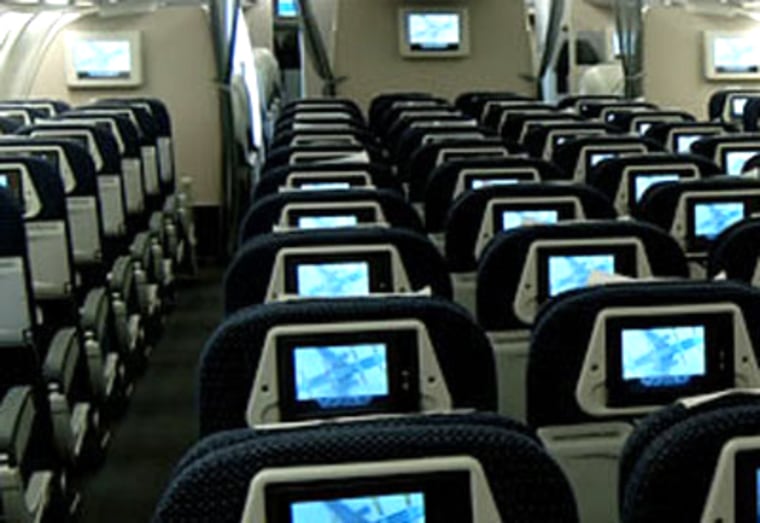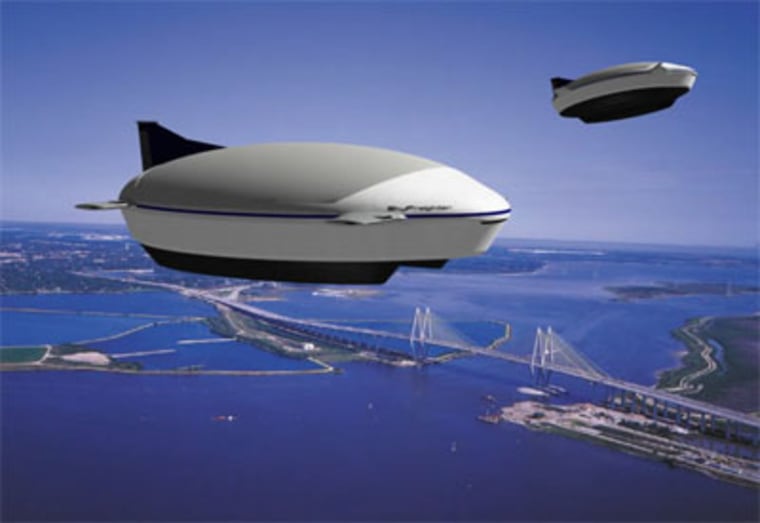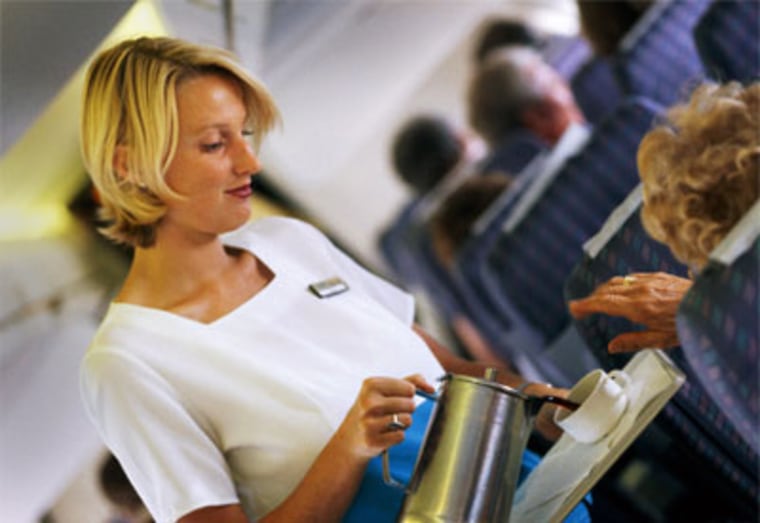Ah, the jet set. Crammed into a coach-class seat next to a pair of sweaty neighbors. Nothing to look at but the back of an air sickness bag. Your knees are crushed when the jerk in front of you pushes his seat back. Good stuff.
Take heart. At Boeing's Payload Concepts Center north of Seattle, engineers are studying techniques used by Starbucks, Disney, Cirque du Soleil and Wal-Mart for clues to make flying less of a chore. "We are having a blast,” said Pete Guard, the center's director. Good for them. Now what about us?
Well, for starters, what if airlines adopted Wal-Mart's inventory tracking systems for handling passenger luggage? U.S. airlines lose, on average, about 250,000 bags a year, Guard says. That's less than 1 percent of all the bags they handle--but with each costing up to $90 to recover and deliver, it's still a substantial cost.
If airlines put one of Wal-Mart's radio frequency identification (RFID) tags on each bag, they'd be able to better track them--cutting losses. Further, the technology could allow airlines to create a database on board the plane where passengers could confirm that their bags are flying with them to Oakland, not Auckland. That would reduce passenger anxiety--and maybe make them less insistent on toting massive carry-on bags that slow down the boarding process.
Boeing is also studying whether the food you eat on a flight can make you feel better. The research includes nutritional studies, as well as figuring out what kinds of galleys and packaging airlines would need to serve the improved meals. One partner in the study: the manufacturers of Cliff Bars.
Engineers are also looking into the seats. Some models now under study recline by moving the bottom of the seat forward, instead of pushing the back of the seat into the lap of the person behind. This would reduce a major source of irritation.
Among other ideas in the works:
Better service: Boeing has teamed with Disney to study ways airlines can adapt Disney's customer-service techniques.
Connectivity: Boeing's experiment with aerial Internet service, called Connexion by Boeing, failed. The company last year closed the operation. But others are pushing ahead, including Panasonic, which will have a system capable of text message transmission available with a year.
Cell phones: Panasonic is among several companies developing Voice over Internet phone service for aircraft. The issue here is less technology than one of human factors, said Boeing's Guard. How do airlines handle noisy callers? Should you ban calls during quiet times when people are trying to sleep? One idea: designated "no cellphone" zones.
View ports: Boeing's also considering embedding view ports in the floors next to doorways. During flights, people could gather there to look down at either a TV image of the ground they're flying over, or a Google Earth image streamed onto the screen.

How far can it go? Early sales campaigns for Boeing rival Airbus A380 super-jumbo envisioned cocktail lounges, casinos--even staterooms--making flying more like a luxury cruise. We're not likely to ever see that, said Teal Group aerospace analyst Richard Aboulafia, because airlines are planning to fill the big space with seats, not duty-free shops.
However, some A380 customers are installing luxury touches for their premium customers. Both Dubai-based Emirates and Australia's Qantas have hired Florida-based B/E Aerospace to design and build personal suites for their A380s. Each seat will be enclosed, and separated from other suites by electronic doors. Each will have its own fold-out work table and closet, a mini-bar--even personal mood lighting. The seats will fold down into beds, and each suite will have its own flat-screen monitor for in-flight entertainment.
These kinds of features are important to airlines competing for top-paying, first-class passengers on international routes. More and more airlines are pursuing these lucrative passengers, whose tickets can range between $4,000 and $7,000 on a trans-Atlantic flight. "Every bankrupt zombie carrier has it as a crucial part of their business plan,” said Aboulafia.

While airlines cater to the cream of their customers, the rest of us can expect some improvements in the back of the plane, albeit some you can't see.
Boeing's new all-composite 787, which will roll out of the company's Everett, Wash., factory in July, will feature more moisture in the air.
Up till now, cabin air systems have kept humidity very low: about 5 percent. That's because condensation--"rain in the plane”--causes dangerous corrosion in aluminum-tube jets. But the lack of humidity "dries out nasal passages and makes you susceptible to germs,” said Aboulafia. That's a major passenger complaint.
That won't be a factor with the 787's carbon-fiber hull, which can't rust, so Boeing has designed a system with 20 percent humidity. Humble as it sounds, that's huge, Aboulafia said. "That'll be the first major breakthrough in passenger comfort.”
